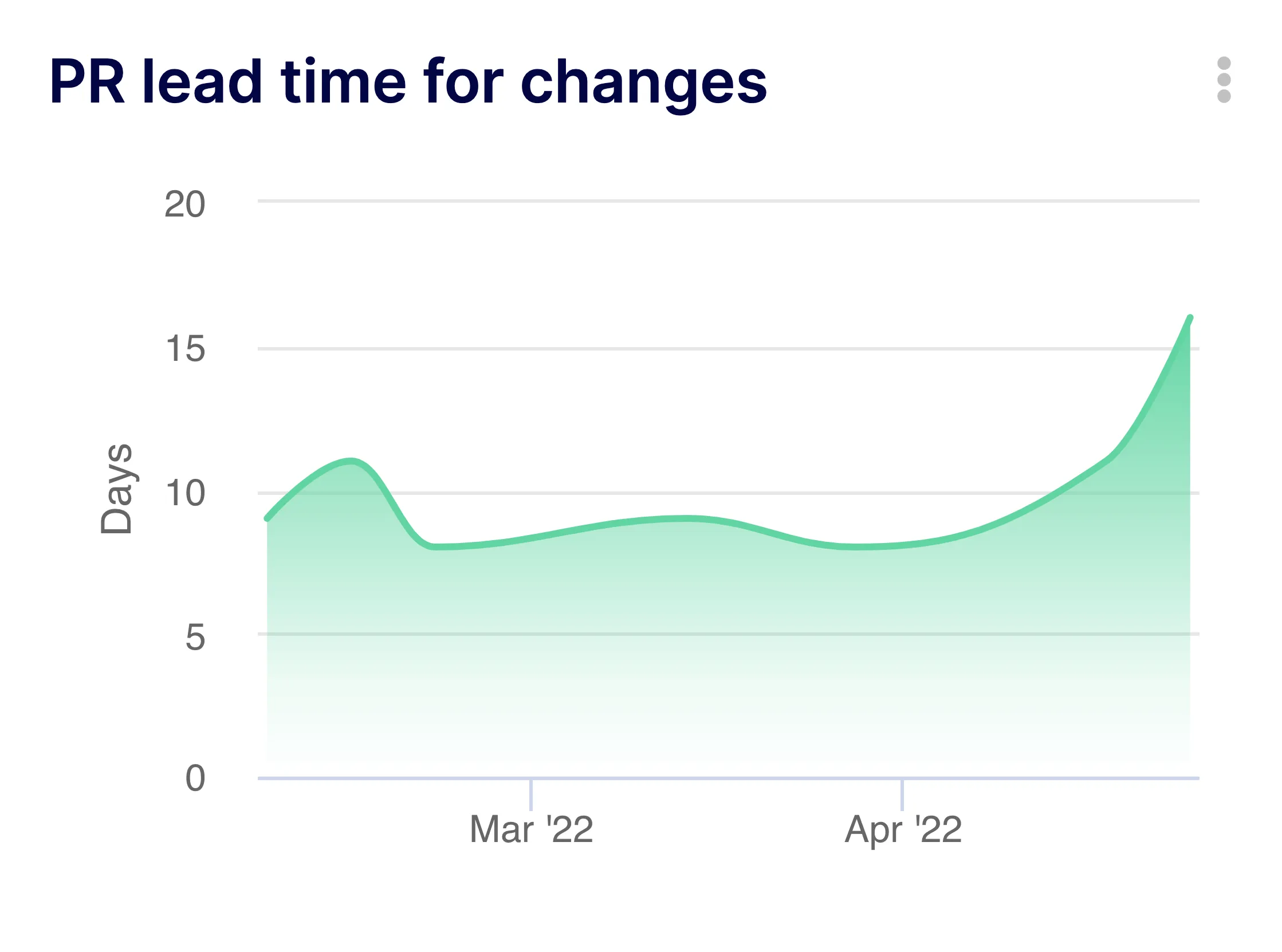Lead Time for Changes - Pull Requests Metric
Streamlining the pull request process is pivotal in today's agile development environments, where speed and efficiency are as critical as the quality of the output. Keypup's Lead Time for Changes - Pull Requests (DORA Metrics) tool automates the crucial task of measuring the time from pull request opening to merge, offering a precise analysis of your team's efficiency at the pull request level. Suitable for teams of any size and complexity, this DORA metrics-aligned metric ensures your development process is both agile and informed.
Optimize Your Development Cycle
with the
Lead Time for Changes - Pull Requests Metric
Streamlining the pull request process is pivotal in today's agile development environments, where speed and efficiency are as critical as the quality of the output. Keypup's Lead Time for Changes - Pull Requests (DORA Metrics) tool automates the crucial task of measuring the time from pull request opening to merge, offering a precise analysis of your team's efficiency at the pull request level. Suitable for teams of any size and complexity, this DORA metrics-aligned metric ensures your development process is both agile and informed.



From startups to large enterprises, Keypup serves all the unique complexities related to project size, structure and teams, including:



.webp)
.webp)

.webp)








%20(1).webp)
.webp)




.webp)

.webp)

%20logo.webp)








.webp)




















.webp)








%20(1).webp)
.webp)




.webp)

.webp)

%20logo.webp)








.webp)



















Enhance Your Pull Request Efficiency for Faster Integration
Automated Insights for Streamlined Development
- Automated LTC tracking: Calculate the average time required to merge pull requests over the past twelve months automatically, eliminating manual tracking and guesswork.
- Benchmark performance levels: Use DORA metrics to understand how your team's performance stacks up, from elite to low performers, and pinpoint areas for improvement.
- Actionable improvement tips: Follow specific recommendations to shorten the lead time for changes, accelerating your development cycle and improving overall productivity.
Strategies to Improve Your Pull Request LTC
Embrace these best practices to enhance your team's pull request lead time:
- Size consistency in pull requests: Ensure pull requests are of a relatively consistent size for better comparability and more accurate metric reporting.
- Clear scoping of issues: Detailed instructions on logic, visuals, and objectives can significantly streamline the development process, leading to quicker merges.
- Automated feedback for developers: Utilize automated code review tools to provide immediate feedback on pull requests, freeing senior developers for more critical reviews.
- Address peer review bottlenecks: Alleviate delays caused by overburdened senior staff by allocating more review time or expanding your senior team.
- Collaborative development and review: Encourage developers to collaborate with the product team throughout the development process to minimize revisions and expedite the review phase.
Elevate Your Development Practices with Keypup
Leverage Precise Metrics for Development Excellence
Keypup's Lead Time for Changes - Pull Requests Metric is not merely a tool for measurement; it is a catalyst for enhancing your software development lifecycle. By providing clear visibility into the efficiency of your pull request process and offering practical strategies for improvement, this metric enables teams to refine their practices, boost productivity, and maintain a competitive edge in software development.
Ready to Revolutionize Your Pull Request Process?
Whether you aim to achieve elite performance with sub-hour LTC or wish to improve from a less efficient benchmark, the Lead Time for Changes - Pull Requests Metric is essential for driving your team towards greater efficiency and success.
Start Streamlining Your Pull Request Process Today – Employ the Lead Time for Changes - Pull Requests Metric and embark on a journey to a more efficient, productive, and agile development process.







